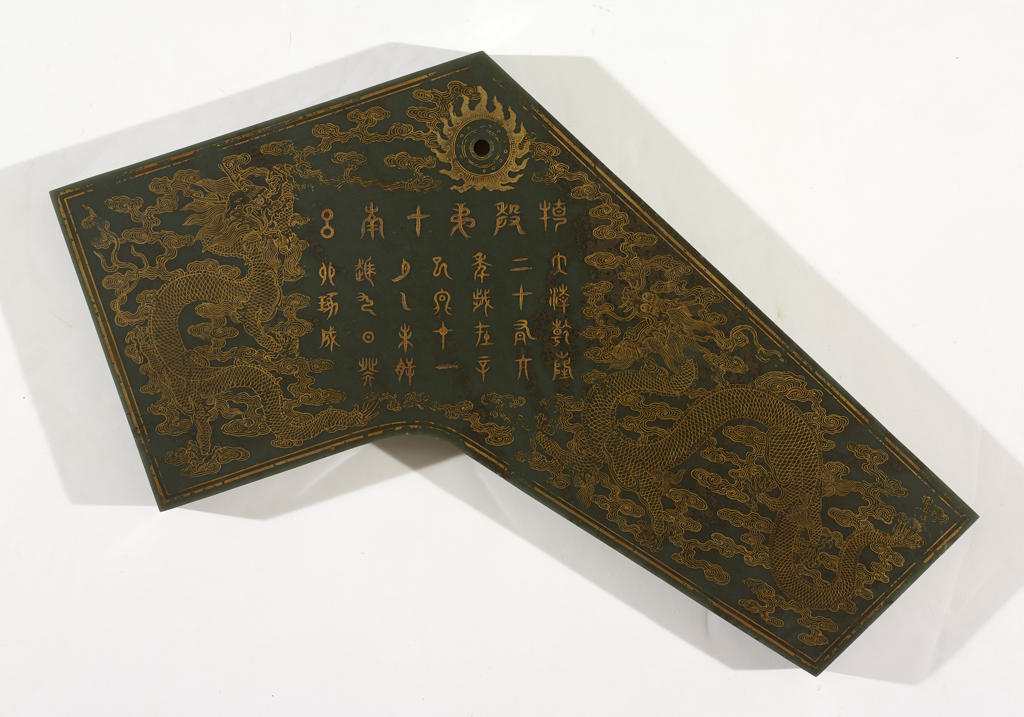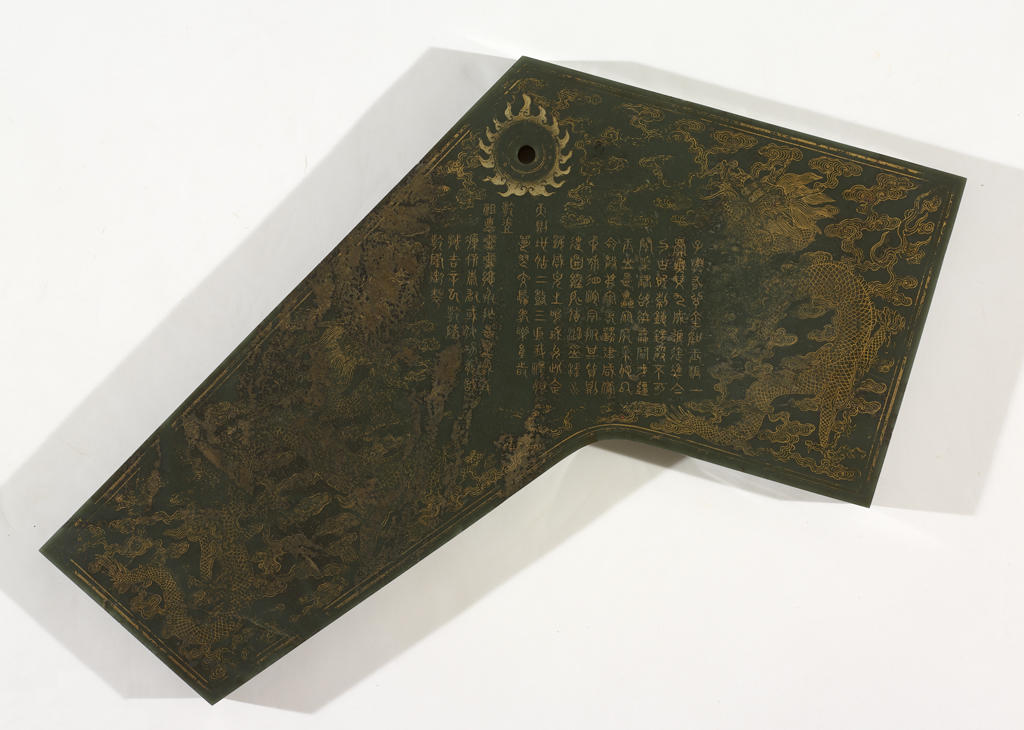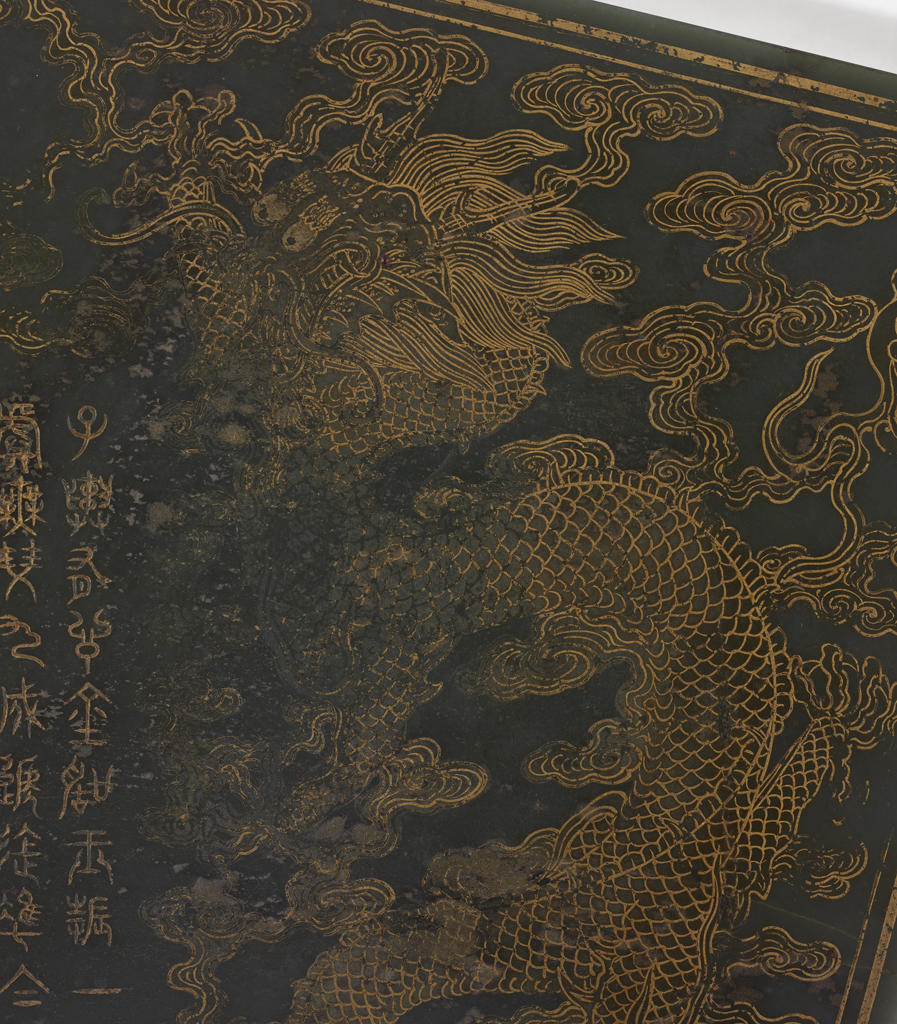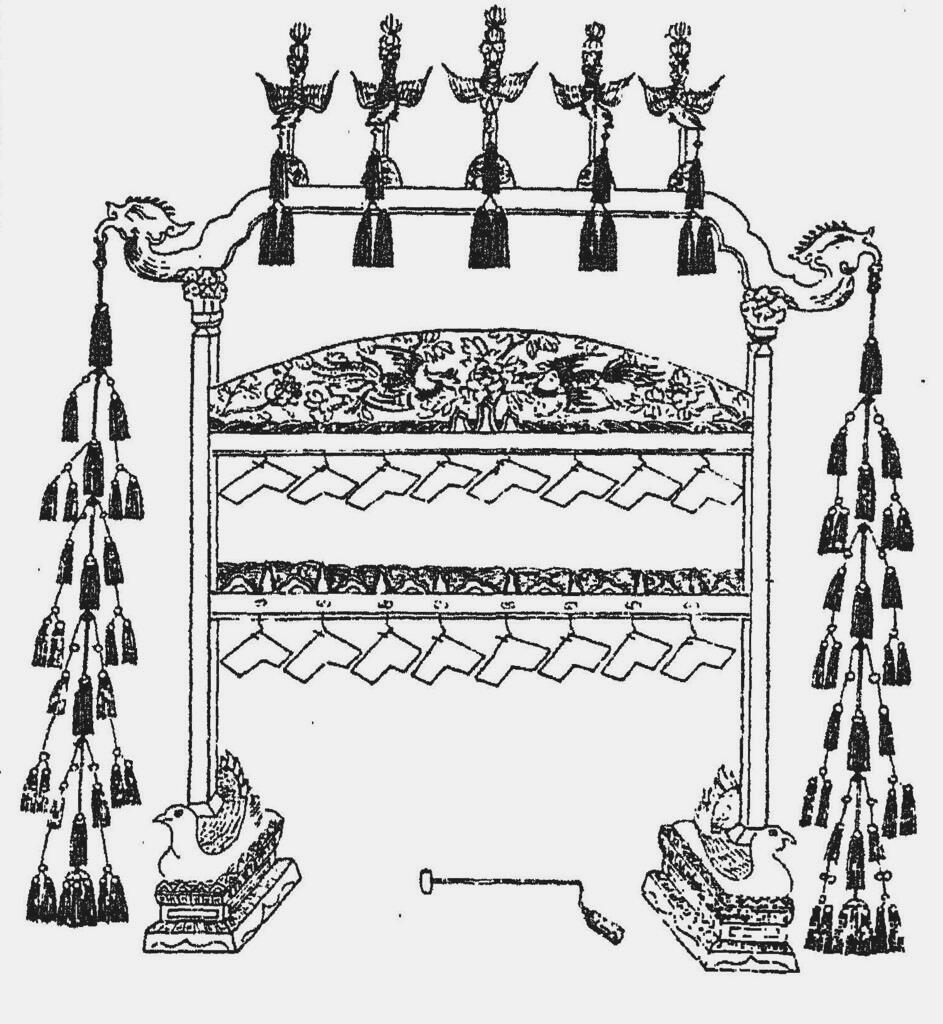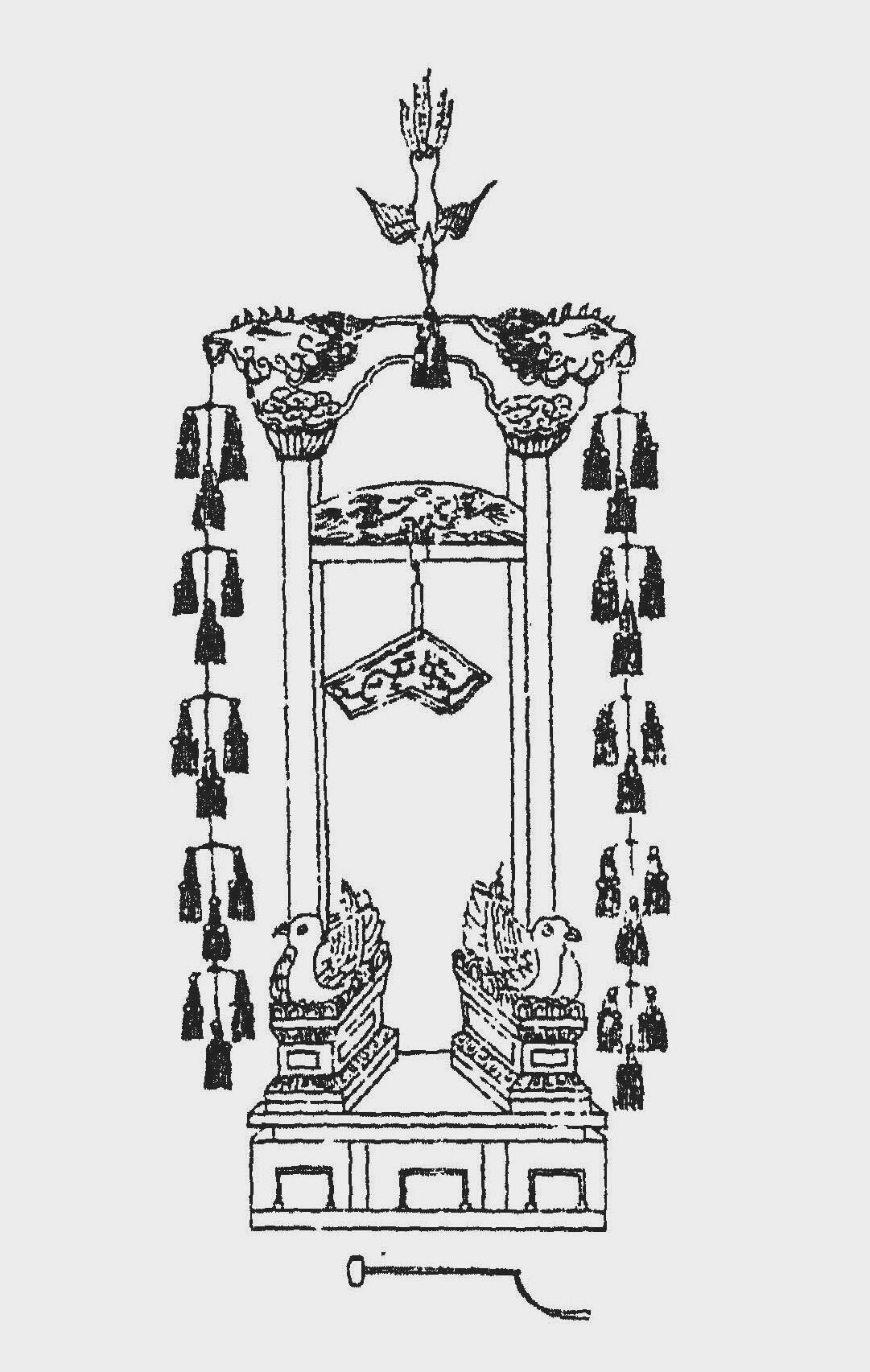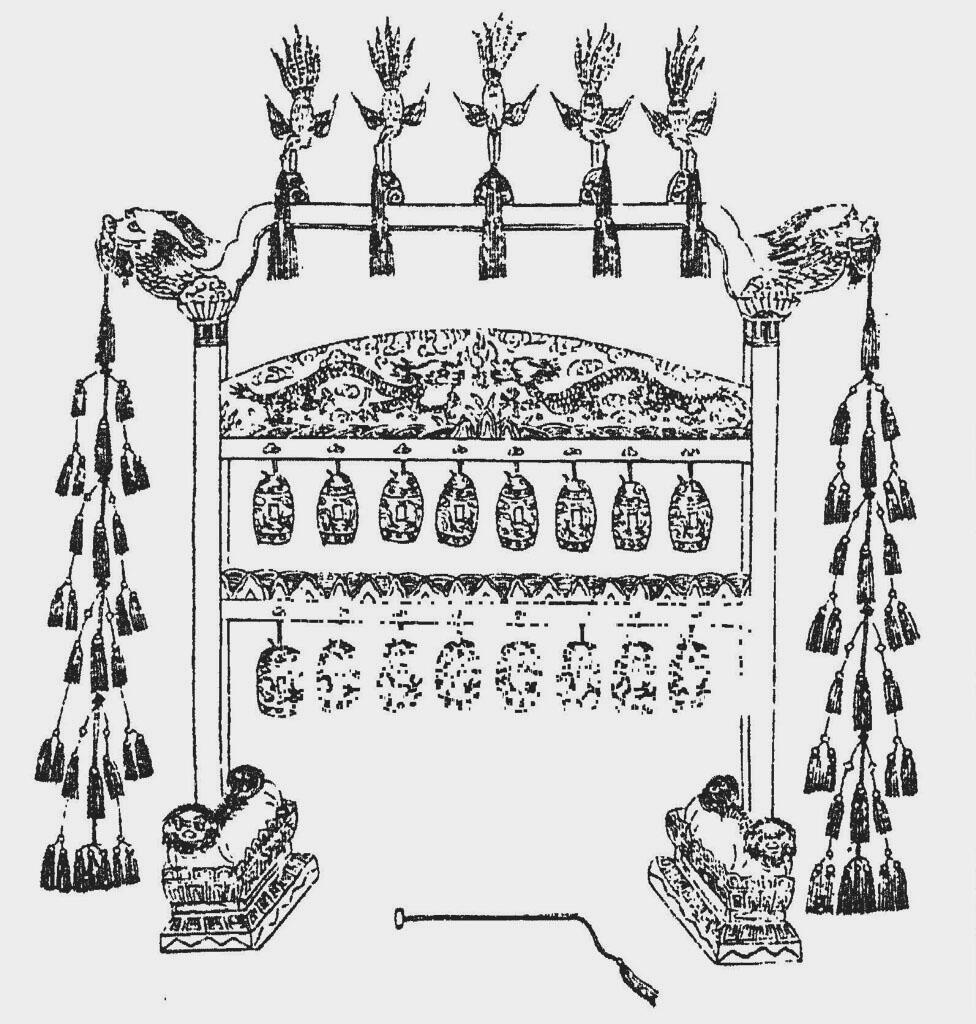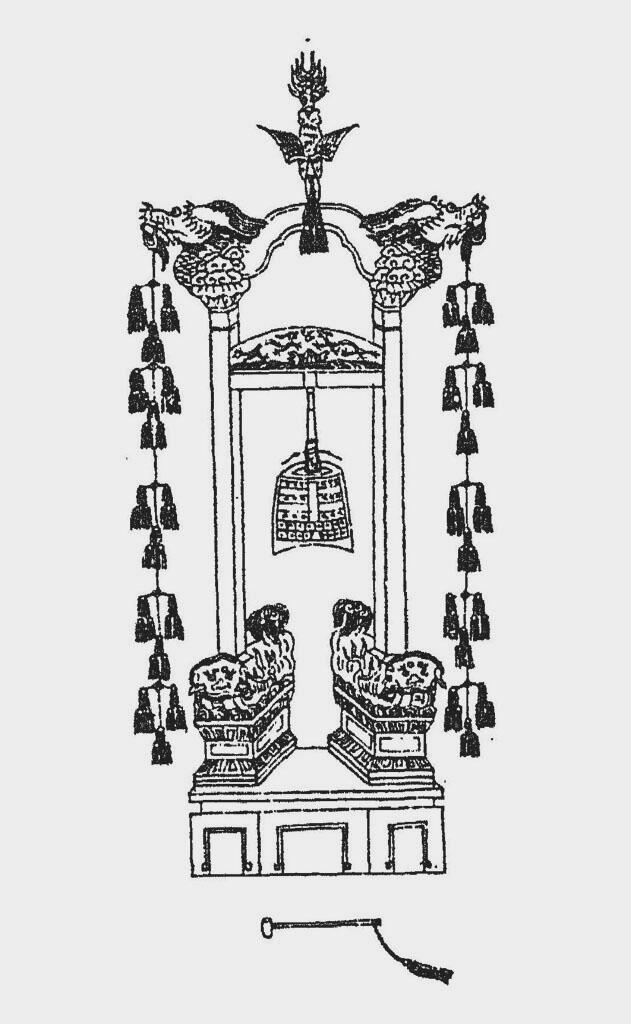From the very beginning of Chinese history, state ritual was essential in establishing the legitimacy of the reign, and music was always an integral element of those rites. Music is considered to have a transforming power on the character of a person and on social customs. Since the Zhou Dynasty (ca. 1046 BC–256 BC), music has been part of the curriculum for cultivating future rulers and leaders. Early Confucian classics such as the Book of Rites provide detailed guidelines on the performance of ritual music for different occasions. In state rituals, every ceremony of offering is to be accompanied with a performance of different ritual music, songs, and dances.
When the Manchu, a non-Chinese ethnic group from the northeast, took over China and established the Qing Dynasty (1644–1911), they adopted the Confucian ritual system of the previous Ming Dynasty (1368–1644). The Qing rulers made changes in various aspects of ritual, bringing the music closer to the ancient models. By adopting Confucian rituals, the Qing rulers hoped to reinforce the legitimacy of their regime in the eyes of the majority Chinese population. The piece in the collection of the RISD Museum was, according to its inscription, made in 1761. It originally belonged to a set of lithophones (qing) that were part of the Qing emperor’s endeavor to make ritual music more proper and orthodox as compared to earlier dynasties.
The qing (pronounced ching) has ancient origins. The earliest examples date back to the Neolithic period in China. While several varieties have developed over the centuries, the general form remains the same—a slab of stone is hung by a cord through the suspension hole and struck by a beater to make sound. The size and thickness of the lithophone determines its pitch. Tuning the instrument to the correct pitch is considered extremely important in Confucian thinking, because it symbolizes harmony and order in the realm.
There is just one qing in the RISD Museum’s collection, although 16 qing of different pitches were often hung in sequence on a frame (arranged qing), or 12 qing of different pitches hung individually on a stand (single qing). The RISD qing belongs to a set of 12. In this set, each qing corresponds to a particular month of the lunar calendar. The inscriptions on the RISD qing specify that this is the 10th piece in a set made in the 26th year of the reign of Qianlong Emperor (or 1761). During the 10th month of each year, a qing like this one would be taken out of storage and struck to mark the end of each musical movement during important ceremonies.
On both sides of this qing, inscriptions are surrounded by elaborate decoration painted in gold lacquer. Two five-clawed dragons flanking the text contend for the flaming pearl that surrounds the hole through which the lithophone would be suspended. The dragons soar among clouds in the shape of ruyi scepter (which resembles the sacred lingzhifungus that symbolizes prosperity and longevity). The text is written in seal script, an ancient style that dates to the Qin Dynasty (221–207 BCE). On the back of the qing, a four-character poem explains the production and the historical significance of the instrument.
The pairing of the stone qing and metal zhong (bell) in Chinese ritual music may date back to as early as the 12th century BCE. The bell would mark the beginning of the music and the lithophone would mark the end. The bianzhong, bozhong, bianqing, and teqing made up a major part of the imperial musical ensemble of the Qing Dynasty. This particular ensemble, known as Zhonghe Shaoyue, was played during important state functions.
The production of ritual instruments—including the RISD Museum qing—by the Qianlong Emperor (reign 1735–1796) has significant political meaning. Large-scale quarrying of jade (nephrite, to be specific) to provide material for multiple sets of qing was only possible after the expansion of the western border during the Qianlong reign. Prior to 1761, only arranged zhong and arranged qing were used in the Zhonghe Shaoyue ensemble, but in 1761 a set of ancient single zhong was unearthed. This discovery was regarded as an auspicious sign that confirmed the heavens approved of the current reign. In response to this event, Qianlong Emperor ordered the production of single zhong according to the ancient models, as well a matching set of single qing.
In this reconstruction of ancient Chinese ritual music, arranged zhong, arranged qing, and single qing are shown among other instruments. The arranged zhong can be seen in the background in the beginning of the video. Around 1:02, the arranged qing is present, and the female musician strikes the single qing. This single qing is, however, modeled after earlier examples, where the shape is more rounded rather than angular as in the RISD Museum’s example.
References
Bartholomew, Terese Tse and Mitchell Clark. “The Walters Art Gallery 1764 Jade Qing Lithophone and Related Pieces.” The Journal of the Walters Art Gallery 49/50 (1991/1992): 131–140.
Fang, Jianjun. “On the Special Qing, Set of Qing and Zhonghe Shaoyue in Qianlong Dynasty.” Huangzhong: Journal of Wuhan Conservatory of Music, China no. 1 (2008): 110–113.
Liu, Johanna Liu. “Music in Classical Confucianism: On the Recently Discovered Xing Zi Ming Chu.” In Confucian Ethics in Retrospect and Prospect, edited by Qingsong Shen and Kwong-loi Shun. Washington, DC: Council for Research in Values and Philosophy, 2008.
Wu, Ben Wu. “Ritual Music in the Court and Rulership of the Qing Dynasty (1644–1911).” Ph.D. diss., University of Pittsburgh, 1998).
Further Reading
Lam, Joseph Sui Ching. State Sacrifices and Music in Ming China Orthodoxy, Creativity, and Expressiveness. Albany: State University of New York Press, 1998.
Yung, Bell, Evelyn Sakakida Rawski, and Rubie S. Watson. Harmony and Counterpoint: Ritual Music in Chinese Context. Stanford: Stanford University Press, 1996.
Amy S. Huang is a PhD candidate in the history of art and architecture at Brown University. She specializes in Chinese paintings of the Ming and Qing dynasties and is currently working on her dissertation on 17th-century Nanjing paintings. Amy holds an MA in Asian art history from Boston University (2010) and an MA in museum studies from University College London (2005).
